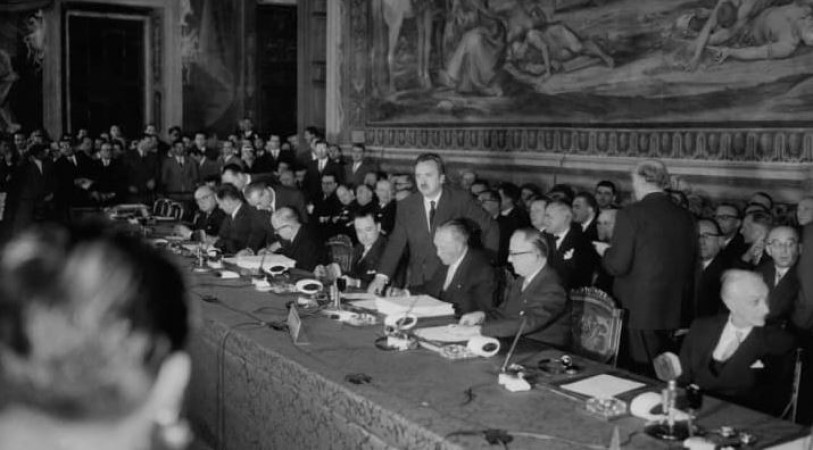
Introduction
The Treaty of Rome, signed on March 25, 1957, brought together six European countries, namely Belgium, France, Germany, Italy, Luxembourg, and the Netherlands, in a historic effort to promote economic integration and cooperation. The signing of this treaty laid the groundwork for the establishment of the European Economic Community (EEC), which aimed to create a common market among its member states.
Historical Context
In the aftermath of World War II, Europe faced the challenge of rebuilding and forging unity among nations that had long been divided. The devastating consequences of the war led to a realization that closer economic and political cooperation was necessary to prevent future conflicts and promote stability.
Creation of the European Economic Community
The Treaty of Rome was the result of years of negotiations and discussions among the six founding member states. It sought to establish a framework for economic integration by eliminating trade barriers, promoting the free movement of goods, services, capital, and labor, and fostering collaboration in areas such as agriculture, transport, and energy.
Objectives of the Treaty of Rome
The primary objectives of the Treaty of Rome were to:
Establish a common market to facilitate the free movement of goods, services, capital, and labor.
Promote economic growth and improve living standards within member states.
Create a framework for cooperation in sectors such as agriculture, transport, and energy.
Strengthen political ties and promote peace among European nations.
Free Movement of Goods, Services, Capital, and Labor
One of the key provisions of the Treaty of Rome was the establishment of a common market, which aimed to remove barriers to trade and promote the free movement of goods, services, capital, and labor. This meant that goods produced in one member state could be freely sold in another, and individuals could live and work in any member state without restrictions.
Harmonization of Policies and Institutions
To ensure the smooth functioning of the common market, the Treaty of Rome called for the harmonization of policies and institutions among member states. This involved aligning regulations, standards, and procedures to create a level playing field for businesses and facilitate cross-border cooperation.
The Common Agricultural Policy
The Treaty of Rome also introduced the Common Agricultural Policy (CAP), which aimed to ensure food security, stabilize agricultural markets, and provide income support for farmers. The CAP involved the establishment of price supports, subsidies, and trade arrangements to protect European farmers and promote agricultural productivity.
The Treaty's Impact on Trade and Economic Growth
The signing of the Treaty of Rome had a profound impact on trade and economic growth within the member states. By eliminating trade barriers and promoting the free movement of goods, services, capital, and labor, the EEC created new opportunities for businesses, expanded market access, and stimulated economic activity.
Expansion of the EEC
Over the years, the EEC expanded its membership, welcoming new countries into the community. This expansion not only strengthened economic ties but also fostered political cooperation and promoted peace and stability in Europe. Today, the European Union comprises 27 member states, reflecting the success and evolution of the initial treaty.
The Treaty of Rome and the European Union
The Treaty of Rome laid the groundwork for the establishment of the European Union. The EU, which succeeded the EEC in 1993, has expanded its scope beyond economic integration to include areas such as common foreign and security policies, justice and home affairs, and the adoption of a common currency, the Euro.
Conclusion
The signing of the Treaty of Rome in 1957 marked a significant step towards European integration and cooperation. The establishment of the European Economic Community set the stage for the creation of a common market, the free movement of goods and people, and the harmonization of policies among member states. The treaty's impact on trade, economic growth, and political stability has been far-reaching, shaping the modern-day European Union.
Manipur Violence: Tribal Leader Forum Regrets Kuki Zo Conflict